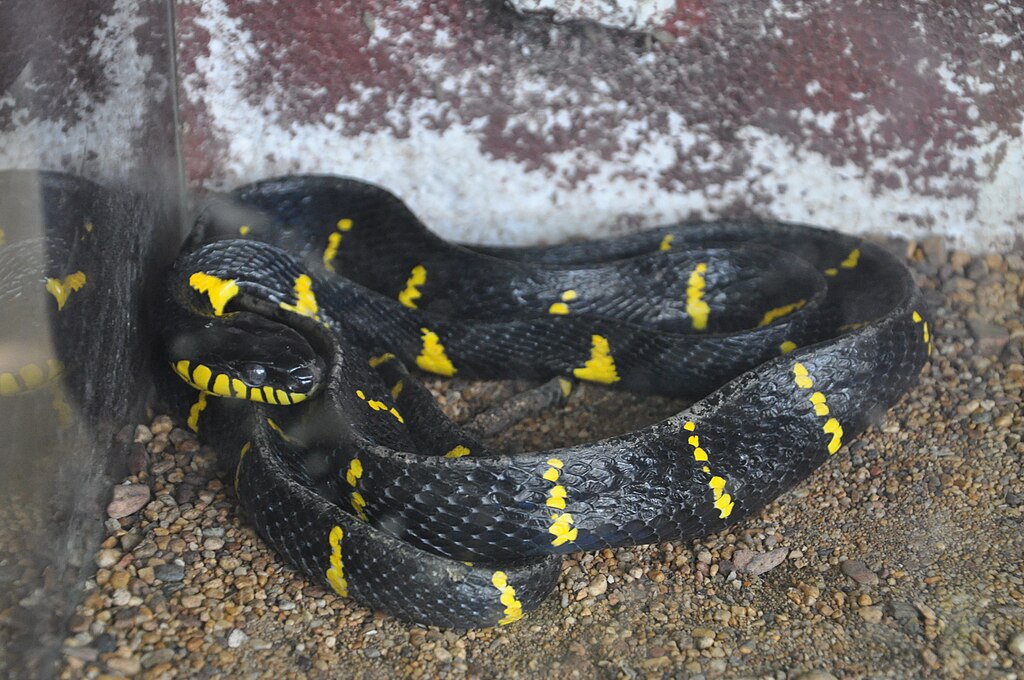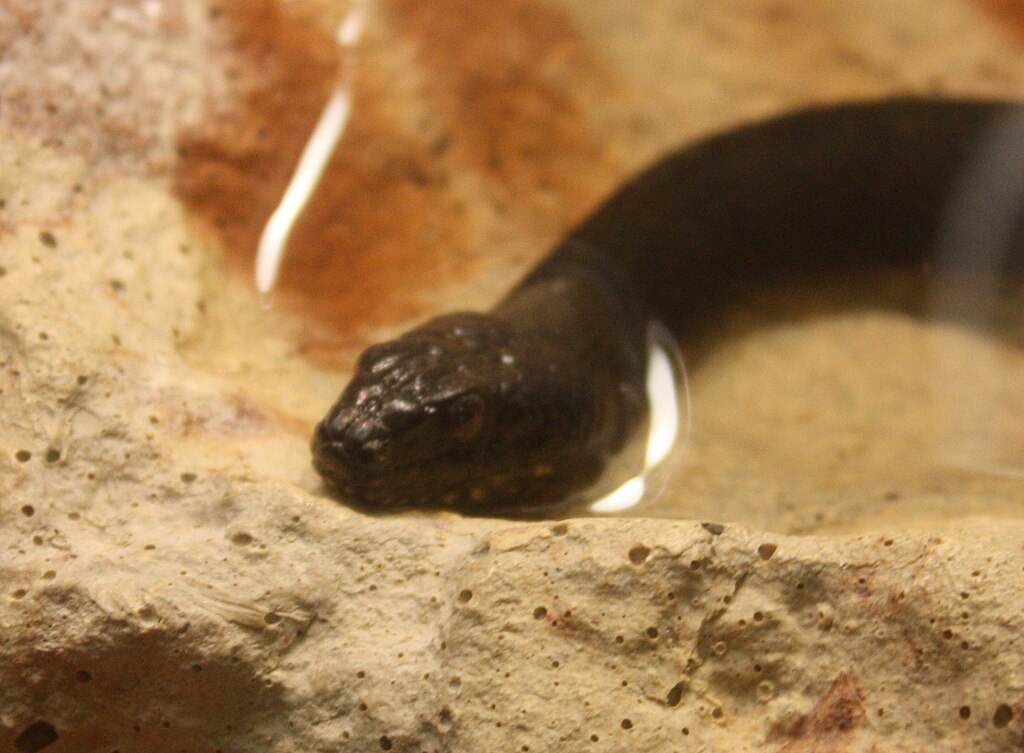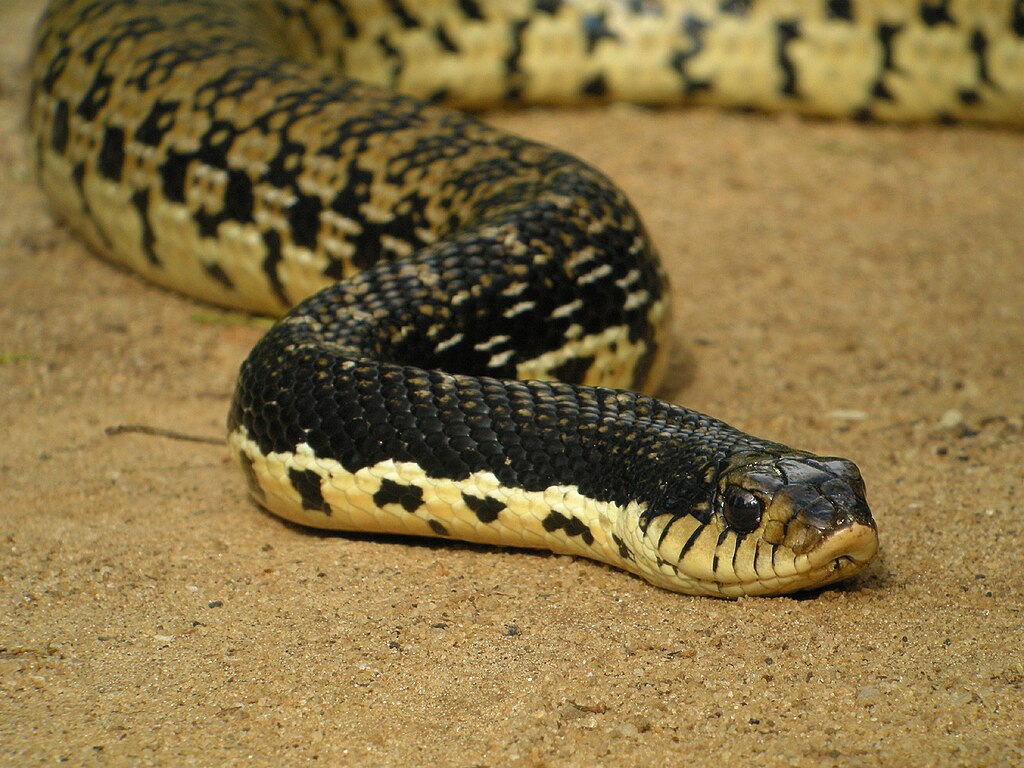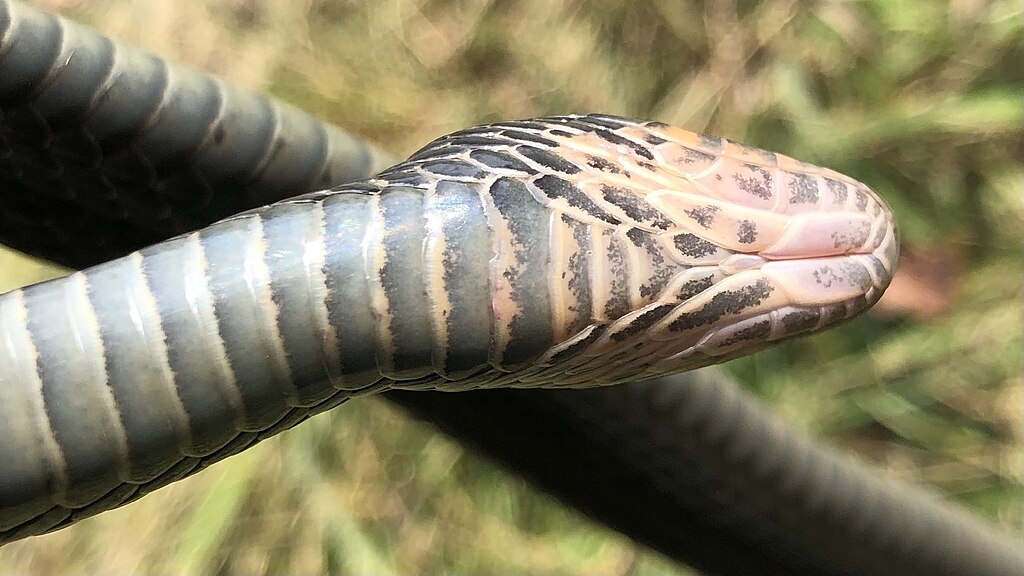In the unending quest for innovation, engineers often turn to nature for inspiration. One of the most fascinating examples of this biomimetic approach is the recent adoption of snake scale designs in aerospace engineering. Snakes, with their remarkable ability to move efficiently across various terrains despite lacking limbs, possess specialized scales that offer unique mechanical properties. These natural structures are now revolutionizing how we design aircraft, spacecraft, and various aerospace components. From reducing drag to improving structural integrity, snake scales represent a breakthrough in biological inspiration that’s changing the future of flight and space exploration.
The Biomimetic Revolution in Aerospace Design

Biomimetics, the practice of emulating natural designs and processes to solve human problems, has become increasingly important in cutting-edge engineering fields. Aerospace engineers face constant challenges in creating vehicles that can withstand extreme conditions while maintaining optimal efficiency. Nature, with its 3.8 billion years of evolutionary problem-solving, offers solutions that human ingenuity alone might never discover. Snake scales represent one of the most promising natural designs being adapted for aerospace applications, joining other bio-inspired innovations like shark skin-based drag reduction and bird wing-inspired control surfaces. This approach marks a significant shift from traditional engineering methodologies toward a more nature-integrated design philosophy that recognizes the superior efficiency of biological solutions.
Understanding Snake Scale Morphology

Snake scales are not simple, uniform structures but complex, specialized adaptations that vary in size, shape, and function depending on their location on the snake’s body. Ventral scales (on the belly) are typically broad and flat to maximize surface contact during locomotion, while dorsal scales show greater variation across species. The overlapping arrangement of these scales creates a flexible yet protective exterior that allows for multidirectional movement. Each scale connects to underlying skin through a hinge-like structure that facilitates remarkable flexibility while maintaining structural integrity. Most importantly, these scales feature intricate microstructures and patterns that contribute to their physical properties, including the ability to reduce friction in one direction while increasing it in another—a feature particularly valuable for aerospace applications.
The Friction-Reducing Properties of Ophidian Scales

One of the most valuable characteristics of snake scales for aerospace engineering is their anisotropic friction properties—they create different amounts of friction depending on the direction of movement. When moving forward, snakes experience minimal friction as their scales are oriented to glide smoothly over surfaces. However, when force is applied against the grain of their scales, friction increases significantly, providing the anchor points needed for propulsion. This directional friction control has profound implications for aerospace applications, where managing drag and surface interactions is crucial for performance. Engineers have discovered that mimicking these properties can lead to aircraft surfaces that dynamically adjust their frictional characteristics based on airflow conditions, potentially reducing drag by up to 20% in some designs compared to conventional surfaces.
Material Science Breakthroughs Inspired by Scales

The unique composition of snake scales has led to significant advancements in aerospace materials. Snake scales are primarily composed of beta-keratin, a protein that provides a remarkable combination of lightness, flexibility, and durability. Materials scientists have developed synthetic composites that mimic these properties while withstanding the extreme temperatures and pressures of aerospace applications. These bio-inspired materials often feature layered structures similar to those found in natural scales, with different components providing complementary properties. Some of the most promising scale-inspired materials include carbon fiber composites with directional grain patterns and polymer coatings with microscopic ridge structures that emulate scale surfaces. These innovations have resulted in components that are simultaneously lighter, stronger, and more adaptive than their traditional counterparts.
Drag Reduction Through Snake-Inspired Surface Designs

Aerodynamic drag represents one of the most significant challenges in aerospace design, directly impacting fuel efficiency, range, and performance. Snake scales offer a natural solution through their unique surface topography that minimizes friction during forward movement. Aerospace engineers have developed surfaces with microscopic ridges and channels based on the patterns found on certain snake species, particularly those adapted for swift movement. When applied to aircraft surfaces, these scale-inspired textures can create microturbulence patterns that significantly reduce overall drag. Flight tests with prototype surface treatments have demonstrated fuel efficiency improvements of up to 8% on test aircraft, a figure that translates to billions in potential fuel savings across the commercial aviation industry. Additionally, these surface treatments can help maintain laminar flow over larger portions of the aircraft, further enhancing aerodynamic performance.
Thermal Management Solutions Based on Desert Serpents

Desert-dwelling snakes possess specialized scales that help them manage extreme temperature fluctuations, a capability of particular interest to aerospace engineers dealing with the thermal challenges of atmospheric flight and space operations. These snakes’ scales feature microstructures that reflect solar radiation while facilitating efficient heat dissipation, allowing the reptiles to survive in environments with temperature variations exceeding 50°C. Aerospace applications of this technology include thermal protective coatings for spacecraft that can withstand the extreme temperature variations of space environments. Engineers have developed ceramic composites with scale-inspired surface patterns that enhance radiative cooling properties while maintaining structural integrity. These materials are particularly valuable for hypersonic vehicles, which experience extreme heat during atmospheric reentry, and for satellite components that must function in both direct solar exposure and deep shadow.
Articulated Surface Systems for Adaptive Control

The overlapping arrangement of snake scales provides a natural model for creating articulated surface systems that can adapt to changing conditions. Aerospace engineers have developed control surfaces inspired by this design, featuring overlapping panels that can shift position relative to one another. These articulated systems allow for precise, variable adjustments to airflow without the gaps and discontinuities that characterize traditional control surfaces like flaps and ailerons. In high-performance aircraft, these scale-inspired control surfaces can reduce turbulence while providing more nuanced control authority across different flight regimes. The design also offers redundancy advantages, as the failure of individual elements has less impact on overall system functionality. Some advanced concepts even incorporate shape-memory alloys in these articulated systems, allowing them to respond autonomously to changing aerodynamic conditions without mechanical actuation.
Self-Cleaning and Anti-Icing Applications

Many snake species possess scales with self-cleaning properties that prevent the accumulation of dirt and debris, a feature now being adapted for aerospace applications. These natural surfaces typically combine hydrophobic (water-repelling) properties with microscopic texture patterns that minimize adhesion of contaminants. Engineers have developed scale-inspired coatings that repel water, ice, and particulates, addressing critical safety and maintenance concerns in aviation. Aircraft equipped with these surfaces require less frequent cleaning and demonstrate improved resistance to icing conditions, a significant safety enhancement. The technology has proven particularly valuable for sensors and optical equipment that must remain clean to function properly in flight environments. Additionally, these self-cleaning surfaces can reduce the buildup of insect residue on leading edges, a seemingly minor issue that can nonetheless significantly impact aerodynamic efficiency on commercial aircraft.
Noise Reduction Through Scale-Inspired Surface Treatments

Acoustic management represents another area where snake scale designs are proving valuable to aerospace engineers. Certain snake species, particularly those that hunt by stealth, have scale arrangements that minimize sound production during movement. These natural designs feature gradually varying surface patterns that reduce turbulence and the resulting acoustic signature. Aerospace applications include scale-inspired surface treatments for engine nacelles and airframe components that reduce noise generation. Early implementations of these designs have demonstrated noise reductions of up to 6 decibels in certain frequency ranges, a significant improvement for both passenger comfort and environmental impact around airports. These acoustic benefits come with minimal weight penalties, making them particularly attractive for commercial aviation applications where noise regulations are increasingly stringent.
Spacecraft Protection Through Scale-Like Shielding

The protective function of snake scales has inspired new approaches to spacecraft shielding against micrometeoroid impacts and space debris. Snake scales provide overlapping protection that can absorb and distribute impact forces while maintaining overall structural integrity even if individual scales are damaged. Engineers have adapted this concept to create multi-layered, scale-like shields for spacecraft and habitats that provide superior protection compared to single-layer designs of equivalent weight. These systems typically feature overlapping ceramic or metallic “scales” mounted on flexible backing materials that can absorb and dissipate impact energy. Testing in simulated space environments has demonstrated that these scale-inspired shields can provide up to 30% better protection against hypervelocity impacts compared to traditional Whipple shields of similar mass. The modular nature of these systems also allows for easier inspection and replacement of damaged sections during long-duration missions.
Manufacturing Challenges and Innovations

Creating aerospace components with the complex microstructures found in snake scales presents significant manufacturing challenges that have spurred technological innovation. Traditional manufacturing methods struggle to reproduce the intricate, multi-scale features that give snake scales their unique properties. Advanced techniques including 3D printing with nanoscale resolution, laser surface texturing, and multi-material deposition processes have been developed specifically to create scale-inspired aerospace components. These manufacturing innovations have applications beyond biomimetic design, advancing the overall capabilities of aerospace manufacturing. Recent developments in self-assembling materials and directed growth techniques promise to further enhance our ability to mass-produce components with scale-like properties at commercially viable costs. These manufacturing advances represent a significant secondary benefit of the research into snake scale applications, potentially transforming broader aspects of aerospace manufacturing.
Future Directions in Snake-Inspired Aerospace Technology

As research into snake scale properties continues, engineers are exploring increasingly sophisticated applications that go beyond current implementations. Active scale-inspired surfaces that can change their properties in response to environmental conditions represent one of the most promising frontiers in this field. These systems might incorporate electroactive polymers or magnetorheological fluids to change surface characteristics dynamically during flight. Another emerging area involves combining scale-inspired designs with other biomimetic approaches, such as bird-feather-inspired vortex generators or shark-skin-inspired riblets, to create integrated systems with complementary benefits. Computational fluid dynamics and machine learning approaches are accelerating this research by allowing rapid virtual testing of complex scale patterns before physical prototyping. As materials science advances, we may eventually see aerospace vehicles with fully integrated, multi-functional “skins” that combine the protective, aerodynamic, and adaptive properties of biological scale systems in ways currently beyond our manufacturing capabilities.
Environmental and Economic Impact

The adoption of snake scale-inspired technologies in aerospace engineering carries significant environmental and economic implications. The drag reduction properties alone could reduce global aviation fuel consumption by billions of gallons annually if widely implemented, with corresponding reductions in carbon emissions. More durable, self-cleaning surfaces reduce the need for chemical cleaning agents and extend component lifespans, further reducing environmental impact. From an economic perspective, these technologies offer compelling advantages despite higher initial implementation costs. Fuel savings, reduced maintenance requirements, and extended service life provide substantial return on investment for commercial operators. Additionally, the manufacturing innovations developed for creating these biomimetic surfaces have applications in other industries, creating potential economic spillover effects. As climate concerns drive increasingly stringent efficiency requirements in aviation, these nature-inspired solutions may become not just advantageous but necessary for compliance with future regulations.
Conclusion

Nature’s 3.8 billion years of evolutionary refinement has created in snake scales a remarkable template for engineering innovation. As aerospace technology continues to advance, the humble snake scale stands as a powerful reminder that some of our most sophisticated solutions may come from careful observation of the natural world. The integration of these biomimetic designs into aircraft and spacecraft represents not just a technical advancement but a philosophical shift toward more sustainable, efficient engineering that works with, rather than against, natural principles. As we look to the future of aerospace—from commercial aviation to interplanetary exploration—the elegant efficiency of snake scales will continue to inspire designs that push the boundaries of what’s possible in human flight.





